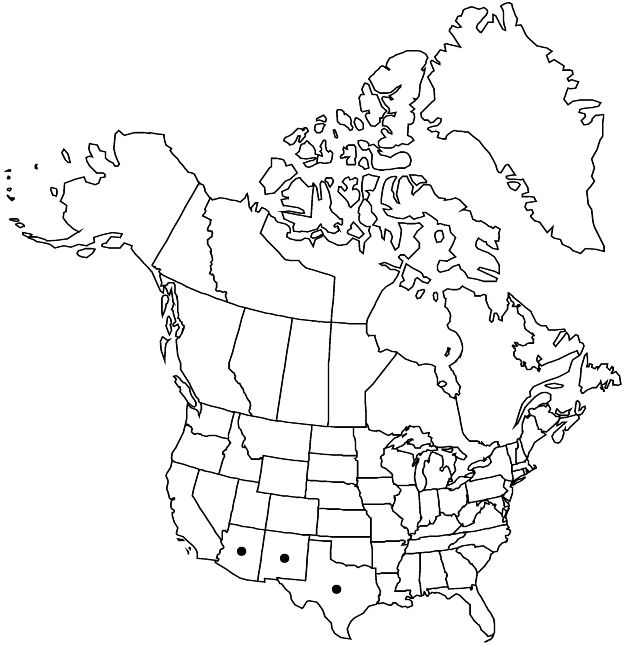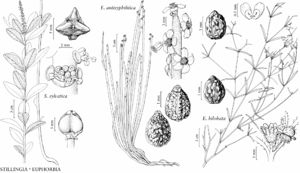Euphorbia bilobata
in W. H. Emory, Rep. U.S. Mex. Bound. 2(1): 190. 1859.
Herbs, annual, with slender taproot. Stems erect, branched, 10–35 cm, glabrous or strigillose (especially when young and around nodes). Leaves opposite proximally, alternate distally; stipules 0.1–0.2 mm; petiole 1–4(–6) mm, glabrous, sericeous or strigillose; blade linear to narrowly elliptic, 8–52 × 2–7 mm, base attenuate, margins entire, ciliate-strigose, apex acute, abaxial surface sparsely strigillose to sericeous, adaxial surface usually glabrous; venation obscure, only midvein conspicuous. Cyathia solitary at distal nodes or in weakly defined cymes or dichasia, dichasial bracts and distal stem leaves wholly green; peduncle 0.5–3.6 mm, strigillose. Involucre obconic, 0.9–1.5 × 0.9–1.3 mm, strigillose to pilose; glands 5, yellow or pink, U-shaped, 0.2–0.3 × 0.4–0.5 mm; appendages greenish, white, or pink, forming narrow rim around gland, or ovate, oblong, or obovate and usually 2-fid, rarely rudimentary, 0.2–1.4 × 0.2–0.6 mm, entire. Staminate flowers 20–25. Pistillate flowers: ovary glabrous, puberulent, strigillose, or pilose; styles 0.5–0.8 mm, 2-fid 1/3–1/2 length. Capsules oblate, 1.5–2.6 × 2.1–3.3 mm, glabrous or puberulent, strigillose, or pilose; columella 1.2–2.1 mm. Seeds brown to grayish black, narrowly ovoid, 3- or 4-angled in cross section, sometimes obscurely so, 1.3–1.9 × 1–1.4 mm, tuberculate, often with shallow depressions; caruncle absent. 2n = 32.
Phenology: Flowering and fruiting spring–fall.
Habitat: Sandy and rocky soils on slopes and canyon bottoms in pine-juniper woodlands, oak woodlands, grasslands.
Elevation: 1400–2600 m.
Distribution

Ariz., N.Mex., Tex., Mexico (Chihuahua, Durango, Sonora).
Discussion
In Texas, Euphorbia bilobata is known only from Jeff Davis County.
Selected References
None.
